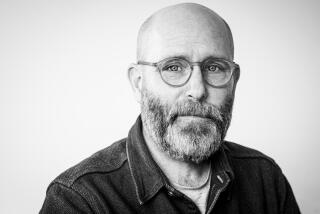Acclaimed Photographer Horace Bristol, Ojai Resident, Dies at 88
OJAI — Pioneer photojournalist Horace Bristol, who chronicled the Dust Bowl migrants John Steinbeck later wrote about in “The Grapes of Wrath” and became one of Life magazine’s first photographers, died of cancer Monday at Ojai Valley Community Hospital. He was 88.
“Horace Bristol was one of the most important photographers of his generation,” famed Life photographer Alfred Eisenstaedt once said. “His photographs must be seen and remembered.”
Yet Bristol and his work were all but forgotten until the mid-1980s. His career was a story of two distinct lives.
In the first, he was a globe-trotting photojournalist whose images landed on more than half a dozen covers of Life. He also worked for Fortune and National Geographic, covering royalty and movie stars as well as the pain of the Depression-era migrants who fled to California’s Central Valley in the 1930s.
While living in San Francisco, he became a friend and neighbor of such giants of photography as Ansel Adams, Edward Weston and Imogen Cunningham.
During World War II, he joined Edward Steichen’s renowned U.S. Naval Photographic Unit, which created indelible images of America at war.
Bristol’s work included photos of life aboard aircraft carriers, fighter planes in formation and the haunting “PBY Gunner,” a picture of a naked aviator who had stripped off his clothes and leaped from a seaplane to rescue a blinded Marine from the Pacific Ocean, then returned to his post in a gun turret.
Yet that career skidded to a halt in 1956 while he was living in Japan, when his first wife committed suicide and the grief-stricken Bristol destroyed much of his huge collection of negatives and prints and gave up photography for a life as a “frustrated architect.”
*
After living in Mexico, he returned to Ojai in 1968 with his second wife, Masako, and their two children. But he would not emerge into the public eye again until the mid-1980s, when his son, Henri, who was preparing a book report for high school, innocently asked if he had ever read “The Grapes of Wrath.”
“He realized he had completely neglected to share that part of his life with his children when in fact he had . . . interviewed migrant workers with Steinbeck,” Henri Bristol said Tuesday. “His perspective was telling stories with images, and I think he got a kick that people regarded it as art at all.”
Indeed, when Bristol decided to put a few of his pictures on the auction block in the late 1980s, he was astonished to discover they brought about $1,500 apiece.
“I hate to be mercenary,” he told The Times in 1989. “The pictures were just as good when I thought they were worth $100, but from that time on I’ve had a little more respect for my work.”
Other people’s respect for his work continued to grow as well, with critics lauding his bold composition and strong eye. Along with centenarian ceramist Beatrice Wood, Bristol became an almost legendary figure in the Ojai Valley’s thriving art community.
His work became the subject of retrospectives in galleries from New York to Los Angeles, his surviving 38 “Grapes of Wrath” images attracted the attention of the Smithsonian and Microsoft founder Bill Gates’ Corbis purchased the digital rights to most of the 16,000 negatives he was still painstakingly cataloging at the time of his death.
*
“He was one of the outstanding photojournalists of all time and probably not regarded to the extent he should have been,” said Tom Roe, a friend and photography instructor at Ventura College, who would often take groups of students to chat with Bristol. “His insights were uncanny. . . . He had this ability to see inside everything and everyone he ever photographed, and that’s what made him unique.”
Bristol’s most treasured pictures are of rural Korean life that he shot while living in postwar Japan. His son still plans to publish them in book form.
“His Korea book will be the crowning jewel of his photographic career,” Henri said. “He wanted it to be the best book he had ever published.”
Bristol was born in Whittier on Nov. 16, 1908. Journalism ran in his blood--his father was a Los Angeles Times linotype operator, his mother a reporter for Hearst’s Herald-Express and Bristol himself read copy at night for The Times after graduating from Belmont High School.
He grew up in rural Santa Paula with his grandfather, who owned the town’s newspaper, and Bristol himself owned a small newspaper in the tiny Santa Clara Valley community of Piru during the early years of the Depression before embarking on a more worldly journalism career.
*
“It is a tremendous loss historically,” said Donna Granata, an Ojai resident who was helping Bristol archive his life’s work. “To hear him talk about an era gone by was one of the pleasures of the world for me.”
In addition to Bristol’s wife and son, survivors include one daughter, Akiko; a son from his first marriage, Horace Bristol Jr.; and numerous grandchildren, great-grandchildren and great-great-grandchildren. He was preceded in death by his first wife, Virginia, and a son, Kit.
A memorial service is scheduled for 11 a.m. Thursday at St. Thomas Aquinas Catholic Church in Ojai.
Memorial donations may be sent to the Ojai Museum or the American Cancer Society.
More to Read
Sign up for Essential California
The most important California stories and recommendations in your inbox every morning.
You may occasionally receive promotional content from the Los Angeles Times.









